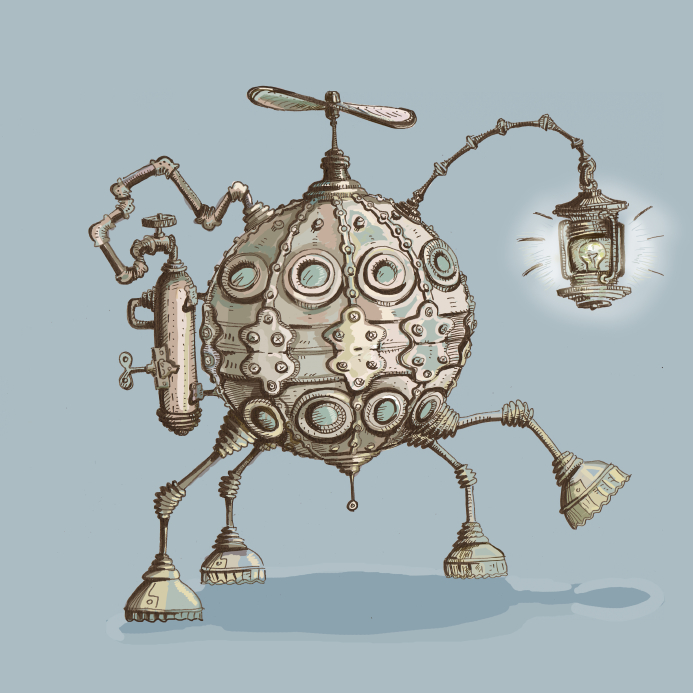They roll, scuttle, climb, and even hop, but no one will ever confuse them for runway beauties. Typically designed for specialized tasks, today's working robots lie well on the near side of the “Uncanny Valley,” built with a pragmatism that emphasizes function over form.
In their earliest forms, working robots have played an important role in industry. Robotic “arms” evolved as the centerpiece of stationary workstations, using articulated-boom-mounted end effectors to weld, paint, or otherwise complete work brought into their reach. For most applications, however, robots need the ability to move toward the work — whether that is conducting surveillance, performing search and rescue, or exploring off-world geology.

While their beauty may remain in the eyes of their designers, working robots bring effective solutions to practical problems.
Designs of blue-color mobile robotic systems often appear to be slapdash design creations, piling mechanical gear and electronic circuits on wheeled platforms. Yet, these designs vary widely — as simple systems such as the two-wheeled, 19-cm-wide, 0.5-g Arduino robot; as robust, tracked platforms such as QinetiQ’s 9-kg Dragon Runner tactical support robot; and even as sophisticated mobile laboratories such as NASA's six-wheeled, 270-cm-wide, 899-kg Mars Rover Opportunity. In fact, while MCU-based systems, wireless transceivers, precision sensors, and advanced vision systems typically gain the most attention with these robots, their mobility designs require as much tuning to the target application as their payload.
In over 11 years of continuous operation, Opportunity has wheeled itself to the off-world driving record, having logged over 25 miles over the surface of Mars thanks to careful route planning and a unique mobility system. Rather than using a rigid frame set on four wheels, this robot carries its payload on a six-wheel rocker-bogie suspension system designed to allow the robotic geologist to ride over obstacles.
Newer robotic designs such as Boston Dynamic's 5-kg SandFlea robots augment the basic wheeled platform with special mobility features for search and surveillance. Resembling a simple RC car, the SandFlea scoots quickly across typical flat surfaces. When the robot encounters an obstacle, its piston actuator propels it up to 8 m high to hop over or onto obstacles.
While many working-class robots drive to the job on wheels or caterpillar tracks, robotics designers are beginning to mimic more natural forms to provide the needed function. For example, just as insects and small animals use clawed feet to climb (seemingly) sheer walls, the Boston Dynamics RiSE 2-kg climbing robot uses six legs tipped with micro-claws to inch up textured surfaces at 0.3 m/s. Similarly, the Boston Dynamics Cheetah robot uses an articulated “spine” to enable it to run on four “legs” at speeds over 29 mph.
Sophisticated “working robot” designs continue to emerge as readily available kits such as those built around the Arduino Robot. Furthermore, engineers can experiment with alternative mobility platforms including biped robot designs such as the Freescale FSLBOT Xtrinsic Sensor Wireless Mechatronics Robot; six-legged designs such as the Parallax crawler kit; or even flying robots with the Parallax quadcopter kit. As blue-color robot designs mature, their beauty will continue to lie less in their appearance than in their effectiveness.
By Steve Evanczuk
Advertisement
Learn more about Mouser Electronics





